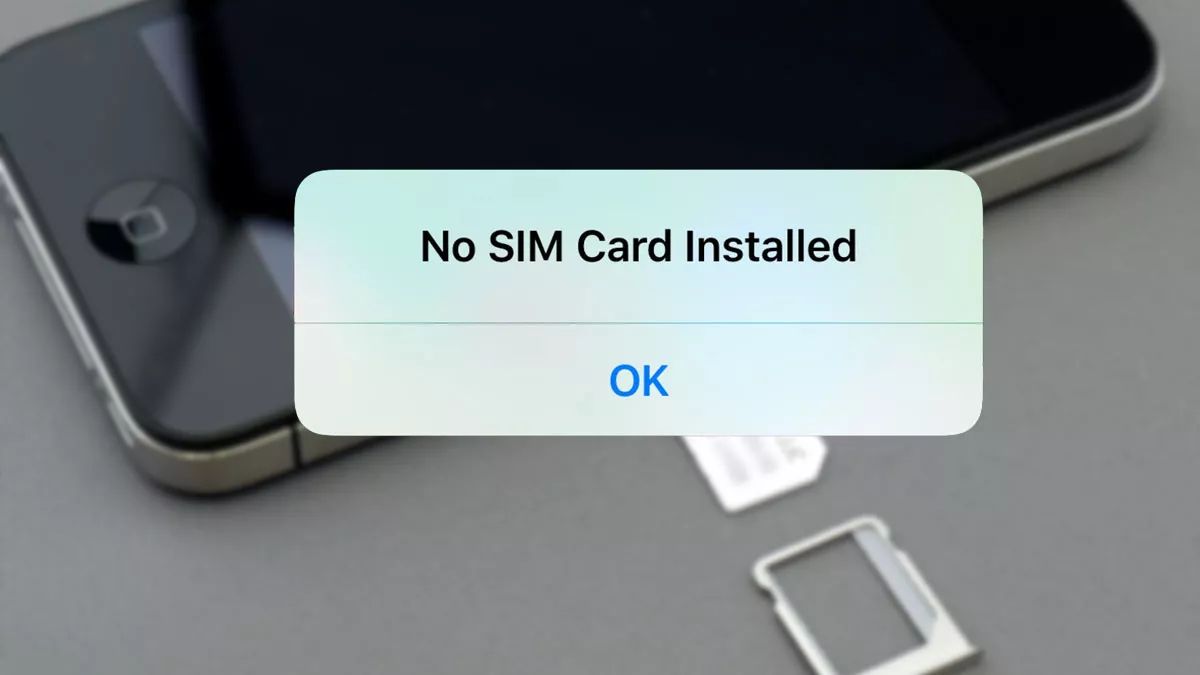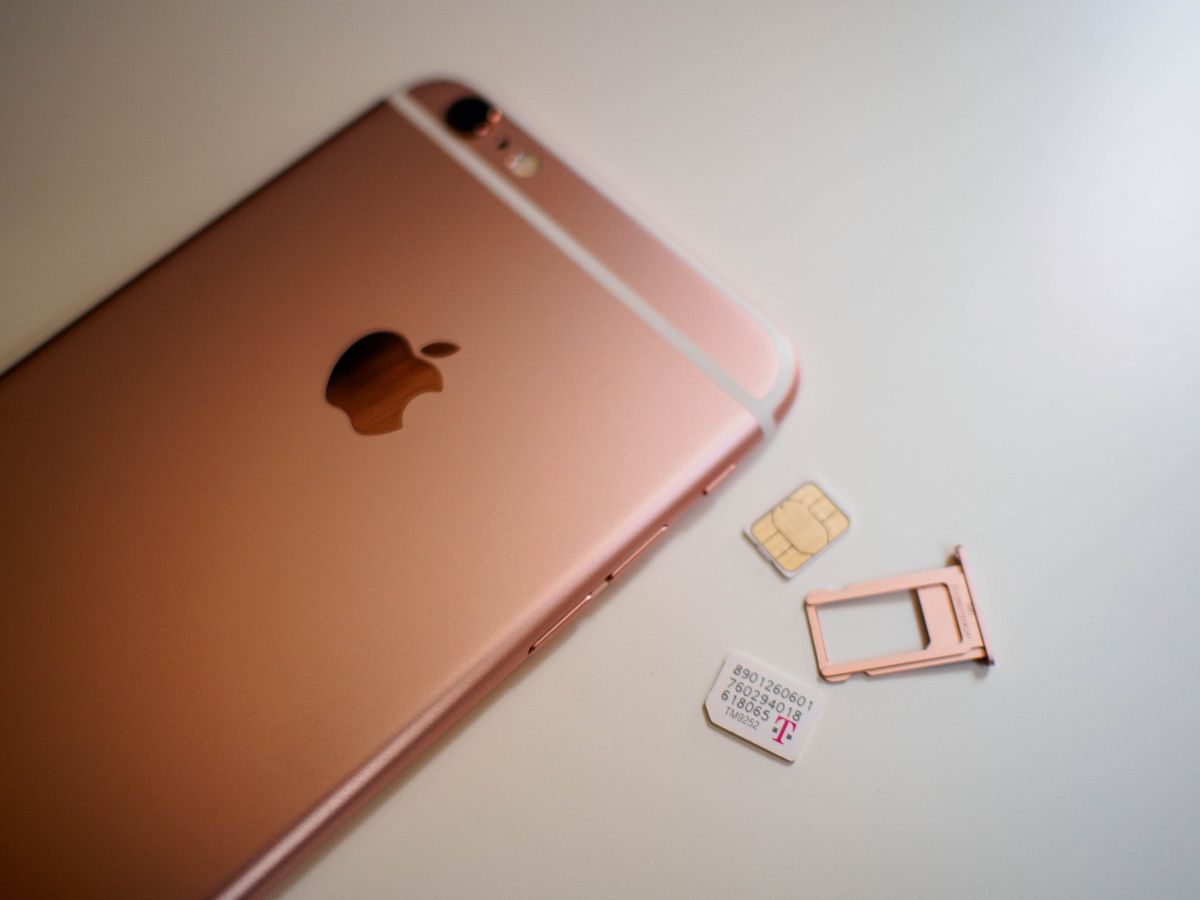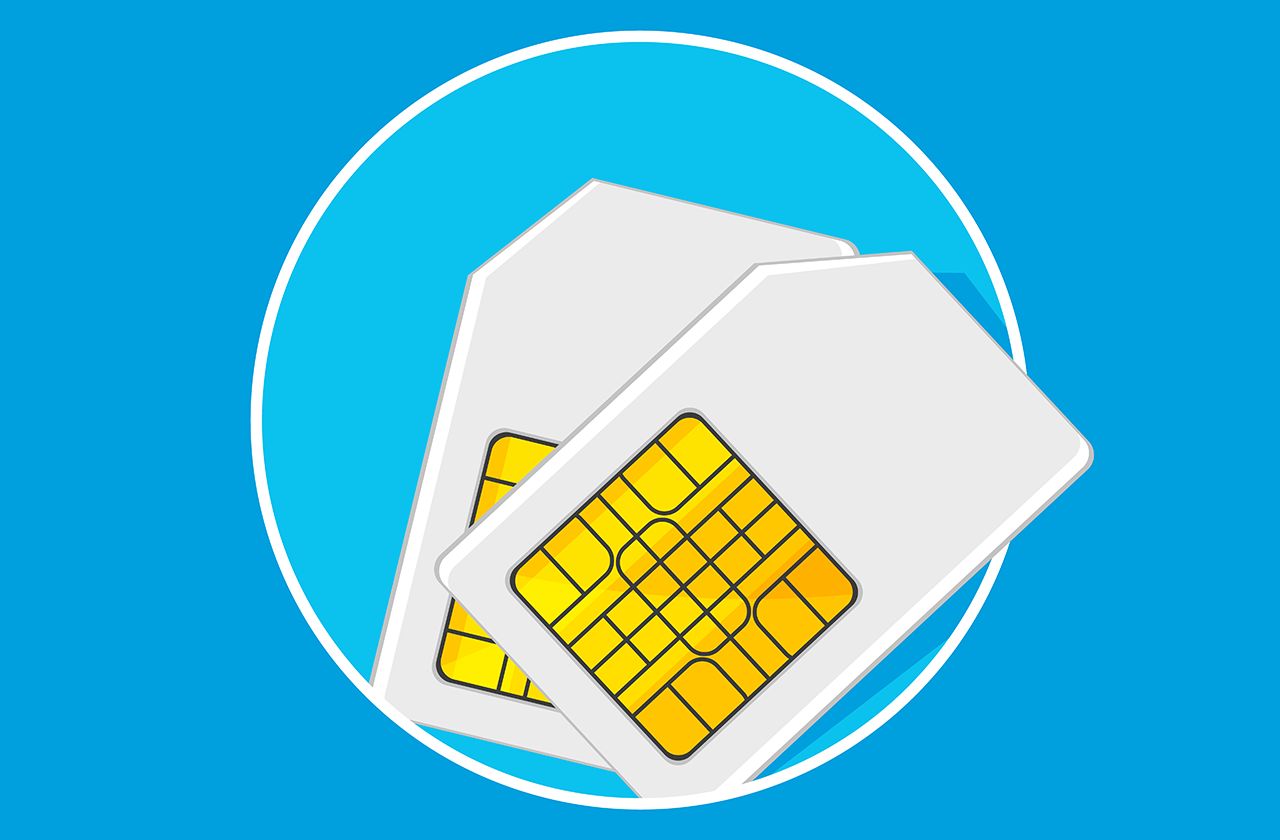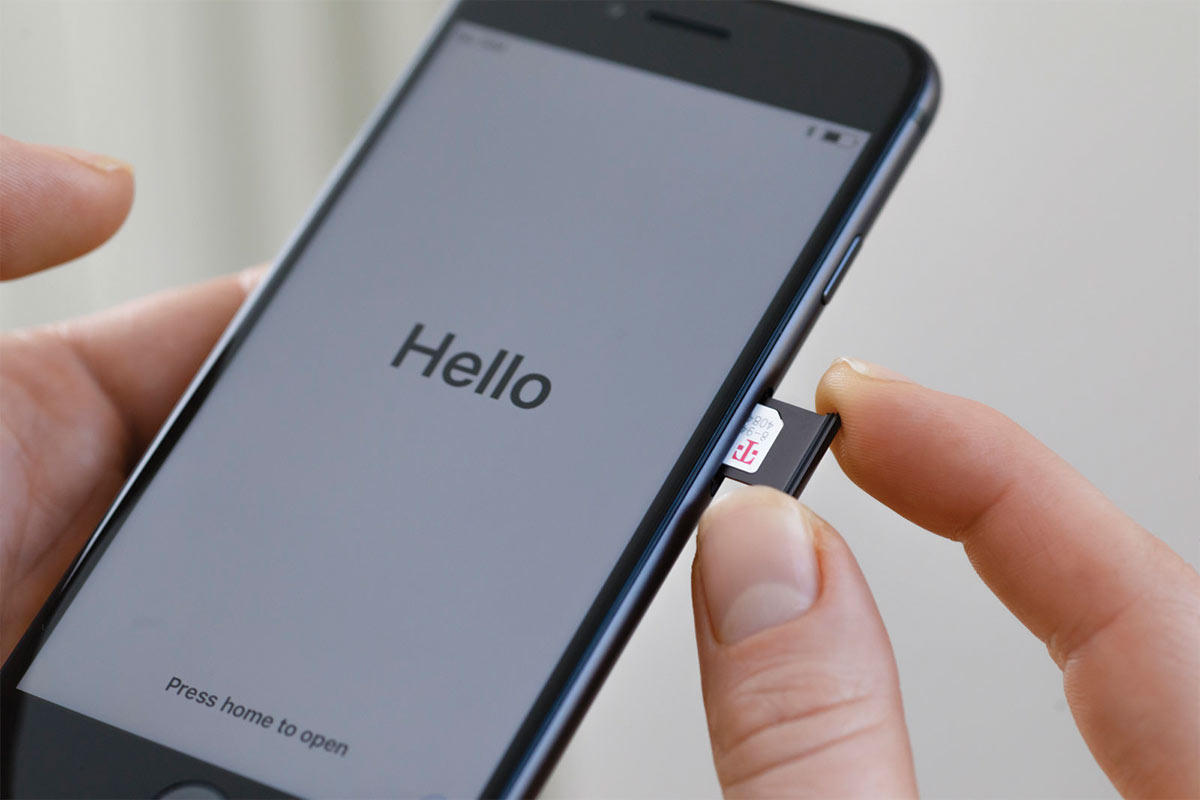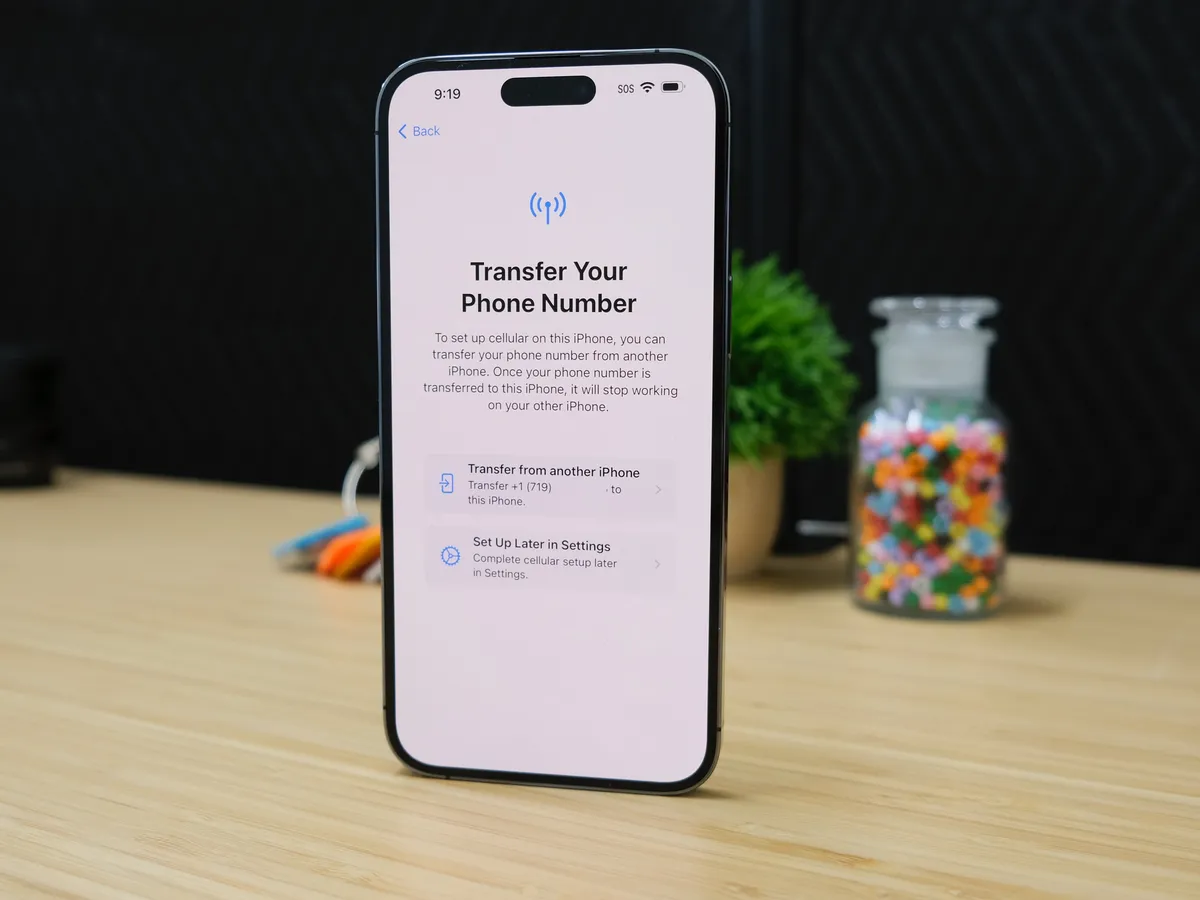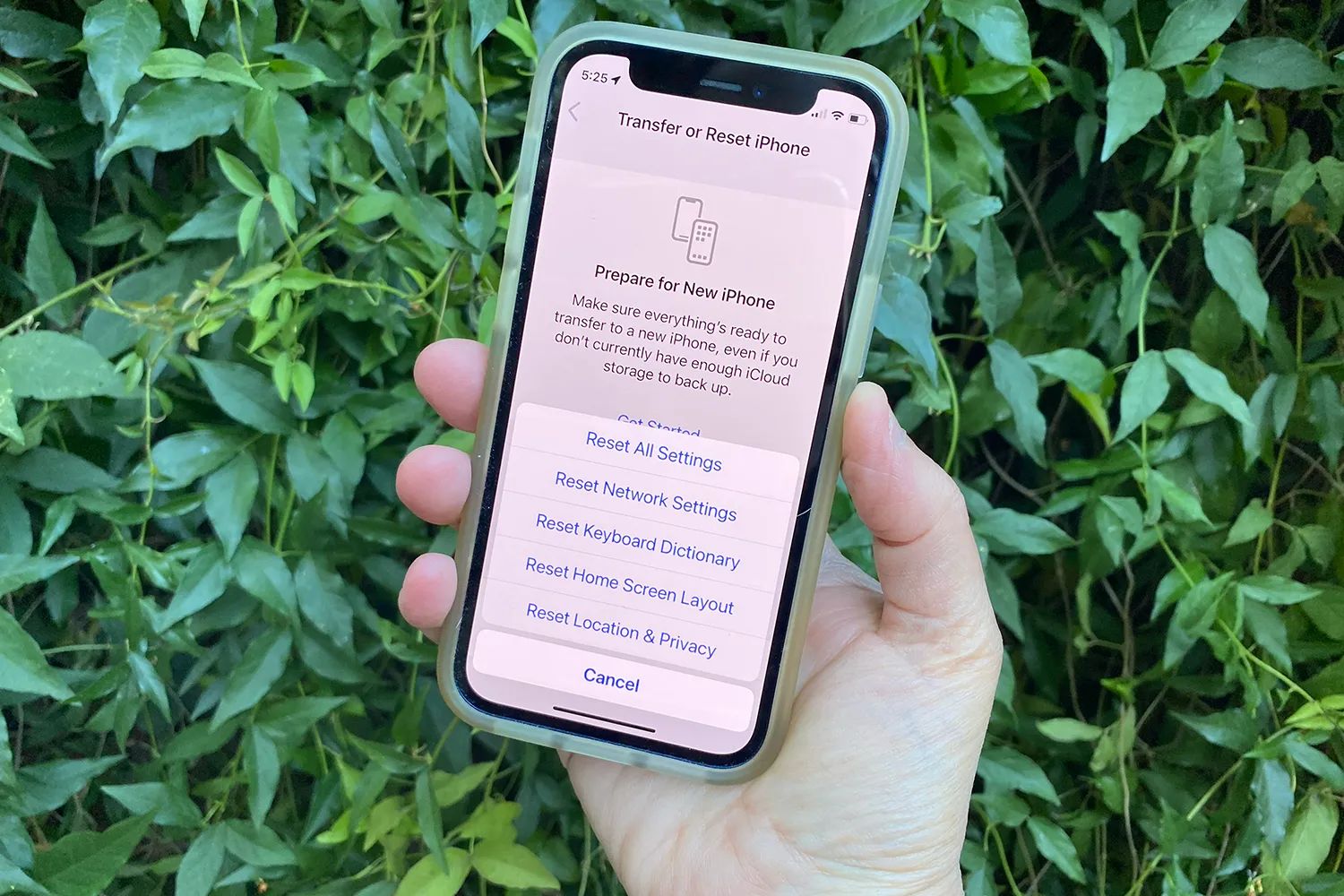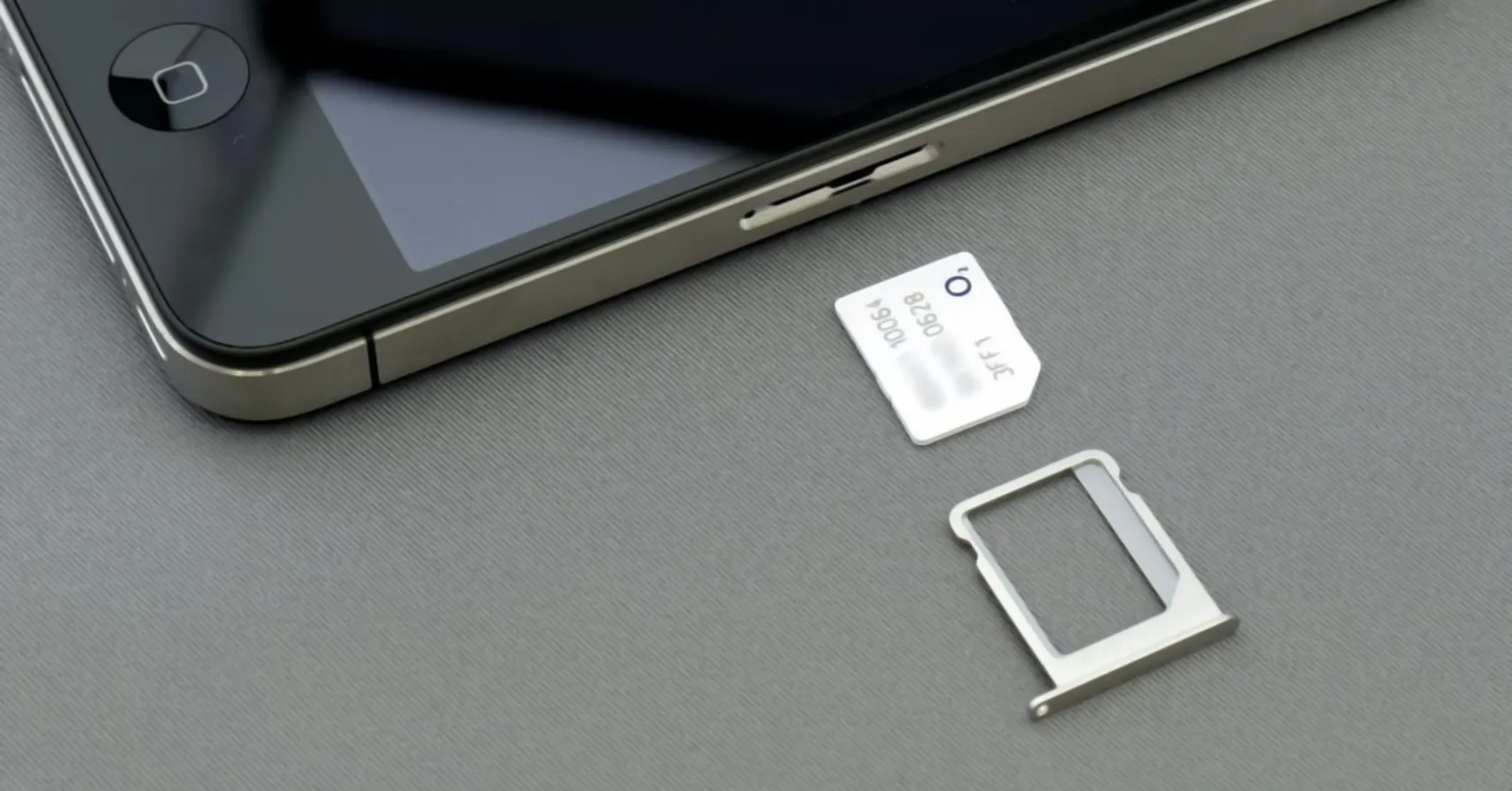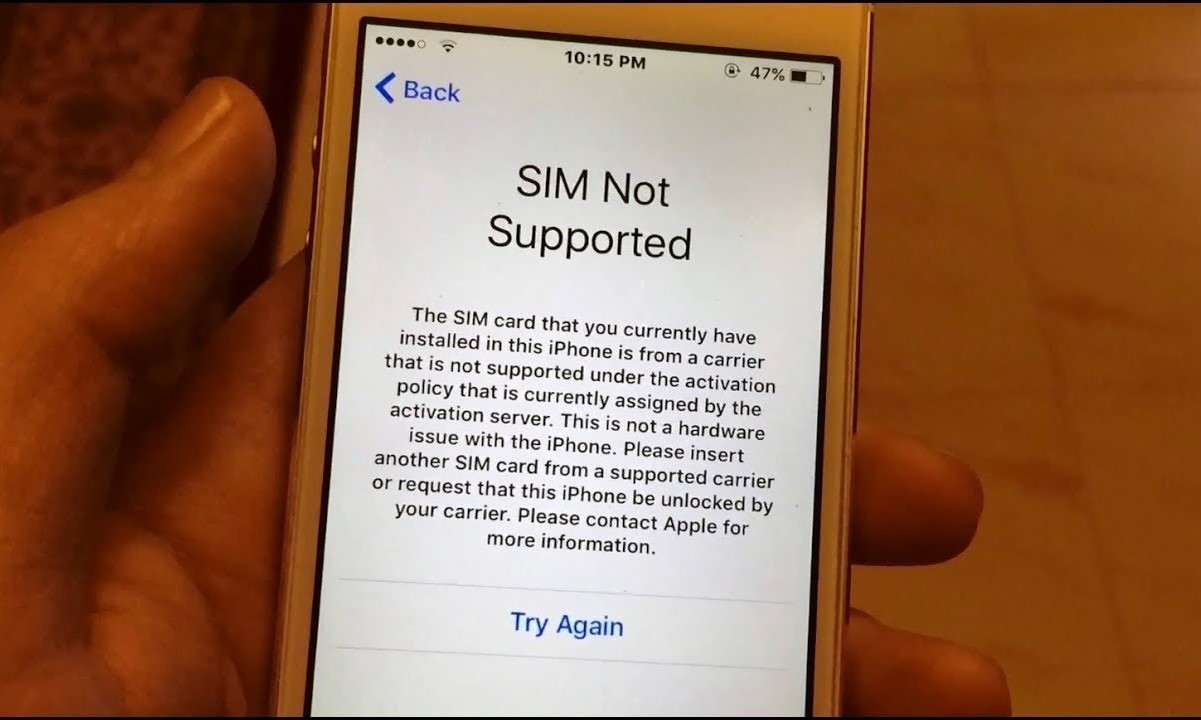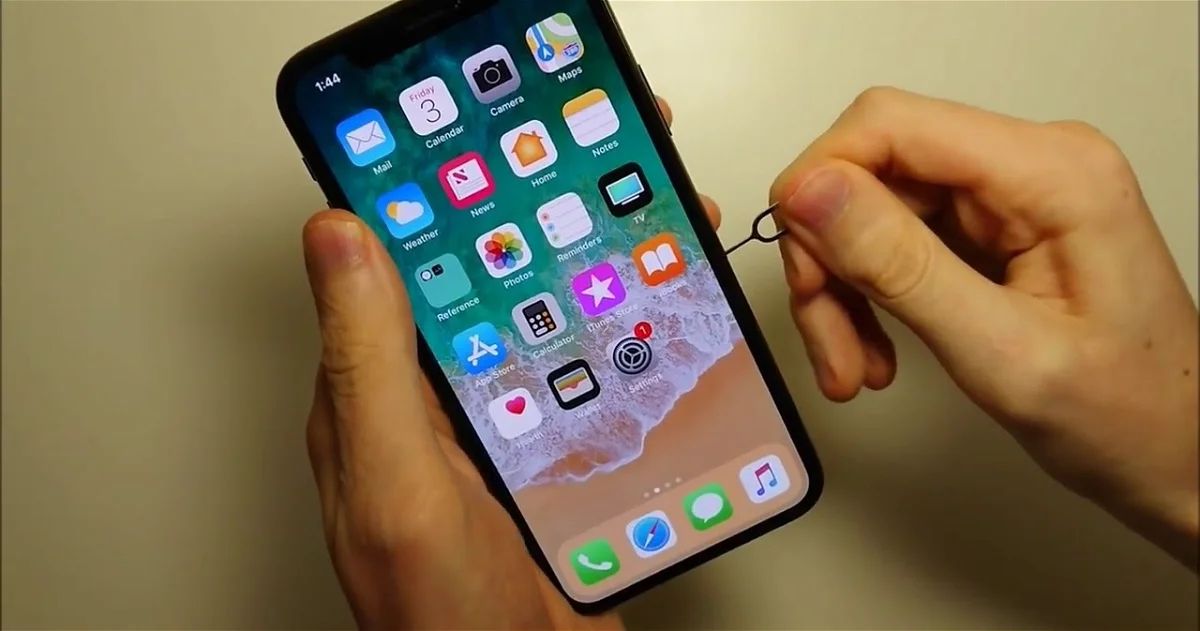Introduction
Encountering the "No SIM Card" error on your iPhone can be a perplexing and frustrating experience. This issue can disrupt your ability to make calls, send texts, and access mobile data, rendering your device partially or completely non-functional. However, with the right troubleshooting steps, you can often resolve this issue and restore your iPhone to full functionality.
In this comprehensive guide, we will explore the various methods to troubleshoot and resolve the "No SIM Card" error on your iPhone. Whether you're an iPhone aficionado or a casual user, understanding these troubleshooting techniques can be invaluable in ensuring that your device operates smoothly and efficiently.
By following the steps outlined in this article, you can equip yourself with the knowledge and confidence to address the "No SIM Card" error effectively. From inspecting the SIM card and tray to seeking assistance from your carrier or visiting an Apple Store, each method is designed to help you identify and resolve the underlying cause of the issue.
So, if you've ever been perplexed by the "No SIM Card" error on your iPhone, or if you're simply keen on expanding your troubleshooting skills, this guide is tailor-made for you. Let's delve into the world of iPhone diagnostics and troubleshooting to conquer the "No SIM Card" error once and for all.
Check SIM Card and Tray
The first step in troubleshooting the "No SIM Card" error on your iPhone is to meticulously inspect the SIM card and tray. This simple yet crucial task can often reveal underlying issues that may be causing the error. Here's how you can effectively carry out this inspection:
-
Remove the SIM Card: Begin by locating the SIM card tray on your iPhone. Use the SIM card eject tool or a paperclip to gently push into the pinhole, releasing the tray. Carefully remove the SIM card from the tray and inspect it for any visible damage, such as scratches, dents, or discoloration. Additionally, ensure that the gold contacts on the SIM card are clean and free from any debris or corrosion.
-
Examine the SIM Card Tray: While the SIM card is removed, take a close look at the SIM card tray for any signs of damage or misalignment. Dust or debris in the tray can also obstruct the proper seating of the SIM card, potentially causing connectivity issues.
-
Reinsert the SIM Card: After inspecting the SIM card and tray, reinsert the SIM card into the tray, ensuring that it fits snugly and securely. Take care to align the notched corner of the SIM card with the corresponding notch in the tray.
-
Test with Another SIM Card (if available): If you have access to another compatible SIM card, consider testing your iPhone with it to determine if the issue persists. This can help rule out potential problems with the original SIM card.
By diligently examining the SIM card and tray, you may uncover issues such as a damaged or improperly seated SIM card, debris obstructing the connection, or a faulty SIM card tray. Addressing these issues can often resolve the "No SIM Card" error and restore seamless functionality to your iPhone.
Remember, the key to successful troubleshooting lies in attention to detail and thoroughness. By taking the time to check the SIM card and tray, you can lay the groundwork for identifying and addressing the root cause of the error, setting the stage for a successful resolution.
Restart iPhone
Restarting your iPhone is a fundamental yet potent troubleshooting technique that can effectively address a wide range of software-related issues, including the "No SIM Card" error. This simple procedure can often clear temporary glitches, refresh system processes, and reestablish essential connections, potentially resolving the underlying cause of the error.
To restart your iPhone, follow these straightforward steps:
-
Power Off: Begin by pressing and holding the power button (also known as the side or top button) until the "slide to power off" slider appears on the screen.
-
Slide to Power Off: Once the slider appears, use your finger to slide it from left to right, initiating the power-off sequence.
-
Wait and Power On: After the iPhone powers off completely, wait for a few moments before pressing and holding the power button again until the Apple logo appears on the screen. This signifies that the device is powering back on.
By performing a restart, you allow the iPhone's operating system to undergo a clean shutdown and subsequent boot-up, effectively refreshing its software environment. This process can help eliminate temporary software hiccups, memory leaks, or conflicting processes that may have contributed to the "No SIM Card" error.
It's important to note that a restart is different from simply putting the device to sleep and waking it up. A restart involves a complete shutdown and reboot, providing a more comprehensive approach to troubleshooting software-related issues.
In many cases, a simple restart can work wonders in resolving the "No SIM Card" error, sparing you from more complex troubleshooting methods. However, if the error persists after restarting the iPhone, it may be necessary to explore additional troubleshooting steps to pinpoint and address the underlying cause.
By incorporating the restart procedure into your troubleshooting arsenal, you empower yourself with a swift and accessible method to potentially resolve the "No SIM Card" error and restore seamless functionality to your iPhone. This foundational troubleshooting technique serves as a valuable first step in addressing software-related issues, offering a quick and effective way to breathe new life into your device.
Update iOS
Keeping your iPhone's operating system up to date is essential for ensuring optimal performance, security, and compatibility with various network services, including the SIM card functionality. If you're encountering the "No SIM Card" error on your iPhone, updating the iOS software may offer a viable solution. Here's why updating iOS is crucial and how you can perform this essential task.
Importance of Updating iOS
iOS updates frequently include bug fixes, performance enhancements, and patches for known issues, all of which can directly impact the functionality of your iPhone's SIM card. By staying current with iOS updates, you can benefit from improved system stability, enhanced network connectivity, and refined communication protocols, all of which are integral to the proper detection and utilization of the SIM card.
How to Update iOS
-
Check for Updates: Start by ensuring that your iPhone is connected to a stable Wi-Fi network. Then, navigate to "Settings," tap "General," and select "Software Update." Your iPhone will then check for available updates.
-
Download and Install: If an update is available, tap "Download and Install" to initiate the process. Ensure that your iPhone is sufficiently charged or connected to a power source to prevent interruptions during the update.
-
Follow On-Screen Prompts: Once the update is downloaded, follow the on-screen prompts to proceed with the installation. Your iPhone will restart as part of the update process.
Benefits of Updating iOS for SIM Card Issues
Updating iOS can address underlying software-related issues that may be contributing to the "No SIM Card" error. By implementing the latest iOS version, you can potentially resolve compatibility issues, network connectivity glitches, and software conflicts that affect the proper detection and utilization of the SIM card.
Additional Considerations
If updating iOS doesn't resolve the "No SIM Card" error, consider contacting your carrier to ensure that there are no account-related issues affecting your SIM card's functionality. Additionally, visiting an Apple Store or authorized service provider can provide expert assistance in diagnosing and resolving the issue.
By prioritizing the update of your iPhone's iOS, you proactively safeguard its performance and address potential software-related issues that may impact the SIM card functionality. This proactive approach ensures that your iPhone remains optimized for seamless communication and connectivity, empowering you to make the most of its capabilities.
Reset Network Settings
Resetting the network settings on your iPhone can serve as a powerful troubleshooting tool when addressing the "No SIM Card" error. This process effectively clears all network-related configurations and preferences on your device, including Wi-Fi, cellular, Bluetooth, and VPN settings. By resetting these settings, you can potentially resolve underlying network connectivity issues that may be contributing to the SIM card error.
To perform a network settings reset on your iPhone, follow these steps:
-
Access Settings: Begin by navigating to the "Settings" app on your iPhone. This is typically represented by a gear icon and is a central hub for managing various device settings.
-
Locate General Settings: Within the "Settings" app, scroll and tap on "General." This section houses essential system-wide configurations for your iPhone.
-
Reset Network Settings: Within the "General" settings, locate and tap on "Reset." This option is often found towards the bottom of the list and provides various reset options for your device.
-
Confirm Network Settings Reset: Select "Reset Network Settings" from the available options. You may be prompted to enter your device passcode or verify the action. Confirm the reset to proceed.
-
Reconnect to Networks: After the reset is complete, your iPhone will restart. Upon rebooting, you will need to reconfigure your Wi-Fi, cellular, and other network settings. Ensure that you have relevant login credentials and access to Wi-Fi networks for this step.
By resetting the network settings, you effectively clear any potential network-related glitches, misconfigurations, or conflicting settings that may have been contributing to the "No SIM Card" error. This process provides a clean slate for your device's network configurations, potentially resolving connectivity issues and allowing for seamless detection and utilization of the SIM card.
It's important to note that while a network settings reset can address many network-related issues, it does not erase your personal data or media from the device. However, it's always prudent to back up your important data before performing any system-level resets or updates.
In the event that the "No SIM Card" error persists after resetting the network settings, it may be necessary to explore additional troubleshooting steps or seek expert assistance to diagnose and resolve the issue. Whether it's a software glitch, network compatibility issue, or hardware-related concern, addressing the "No SIM Card" error effectively ensures that your iPhone remains fully functional and ready to connect you to the world.
Contact Carrier
If the "No SIM Card" error persists despite performing the aforementioned troubleshooting steps, it's imperative to engage with your mobile carrier to delve into potential account-related or network-specific issues. Your carrier, as the custodian of your mobile network service, possesses the expertise and resources to address and resolve SIM card-related concerns. Engaging with your carrier not only provides valuable insights into the status of your account and SIM card but also opens the door to specialized assistance in diagnosing and rectifying the error.
When reaching out to your carrier, consider the following steps:
1. Contact Customer Support
Initiate contact with your carrier's customer support team through their designated channels, which may include phone, online chat, or email. Clearly articulate the "No SIM Card" error and the troubleshooting steps you've already undertaken. Customer support representatives are equipped to access your account details, verify the status of your SIM card, and perform remote diagnostics to identify potential network-related issues.
2. Account Verification
During the interaction with customer support, be prepared to verify your account details, including your mobile number, account PIN, and any relevant identification information. This verification process ensures that the carrier's representatives can securely access and review your account, enabling them to provide accurate and personalized assistance.
3. Network Coverage and Service Status
Inquire about the current network coverage and service status in your area. Network outages, maintenance activities, or network upgrades can sometimes lead to temporary disruptions in SIM card connectivity. By obtaining insights into the network's operational status, you can gain a clearer understanding of any potential network-related factors contributing to the "No SIM Card" error.
4. SIM Card Status and Replacement
Seek clarification on the status of your SIM card, including its activation status, validity, and any associated account restrictions. If necessary, inquire about the possibility of obtaining a replacement SIM card, especially if the carrier's diagnostics reveal potential issues with the existing card. A new SIM card can often resolve persistent connectivity problems and restore seamless functionality to your iPhone.
5. Expert Guidance and Recommendations
Leverage the expertise of the carrier's customer support team to receive tailored recommendations and guidance for addressing the "No SIM Card" error. Whether it involves adjusting account settings, provisioning network services, or obtaining a new SIM card, the insights provided by the carrier's representatives can offer valuable pathways to resolving the issue effectively.
By engaging with your carrier, you tap into a wealth of resources and expertise dedicated to ensuring the optimal performance of your mobile network service. The carrier's customer support team serves as a pivotal ally in diagnosing and addressing the "No SIM Card" error, empowering you to navigate through account-related intricacies and network challenges with confidence.
In the event that the carrier's assistance does not fully resolve the error, consider exploring the option of visiting an Apple Store or authorized service provider to seek further diagnostic assistance. This multi-faceted approach ensures that every avenue is explored to identify and resolve the underlying cause of the "No SIM Card" error, ultimately restoring seamless functionality to your iPhone.
Visit Apple Store
If all previous troubleshooting attempts have failed to resolve the persistent "No SIM Card" error on your iPhone, seeking assistance from an Apple Store or authorized service provider is a prudent and proactive step. Visiting an Apple Store offers access to specialized expertise, diagnostic tools, and genuine Apple-certified solutions tailored to address a wide spectrum of hardware and software-related issues.
Upon visiting an Apple Store, you will have the opportunity to engage with Apple's knowledgeable and experienced staff, often referred to as Apple Geniuses. These individuals possess in-depth knowledge of Apple products and are adept at diagnosing and resolving complex technical issues, including those related to SIM card functionality. Their expertise extends to both hardware and software aspects of the iPhone, allowing for comprehensive diagnostics and targeted solutions.
During your visit, the Apple Genius will likely conduct a thorough assessment of your iPhone, focusing on the SIM card slot, internal components, and software configurations. This meticulous examination aims to identify any underlying hardware anomalies, such as a damaged SIM card reader or connectivity-related issues, as well as potential software glitches that may be contributing to the persistent error.
In cases where a hardware issue is identified, the Apple Store or authorized service provider can offer professional repair or replacement services, ensuring that any faulty components are rectified with genuine Apple parts. This approach guarantees the integrity and compatibility of the repairs, safeguarding the long-term functionality of your iPhone.
Moreover, if the "No SIM Card" error is determined to be software-related, the Apple Genius can leverage specialized diagnostic tools and software solutions to address the underlying cause. This may involve reconfiguring network settings, performing advanced software diagnostics, or deploying targeted software updates to rectify the issue.
In addition to technical interventions, the Apple Store visit provides an opportunity to explore warranty coverage, service options, and potential upgrade paths for your iPhone. The Apple Genius can offer insights into warranty entitlements, service eligibility, and available support programs, empowering you to make informed decisions regarding the maintenance and care of your device.
By visiting an Apple Store or authorized service provider, you gain access to a dedicated support ecosystem designed to address the "No SIM Card" error with precision and expertise. This personalized approach ensures that your iPhone receives tailored attention and solutions, ultimately restoring its seamless functionality and connectivity.
In summary, visiting an Apple Store or authorized service provider presents a strategic avenue for resolving the persistent "No SIM Card" error, leveraging expert guidance, genuine solutions, and comprehensive diagnostics to ensure the optimal performance of your iPhone.







